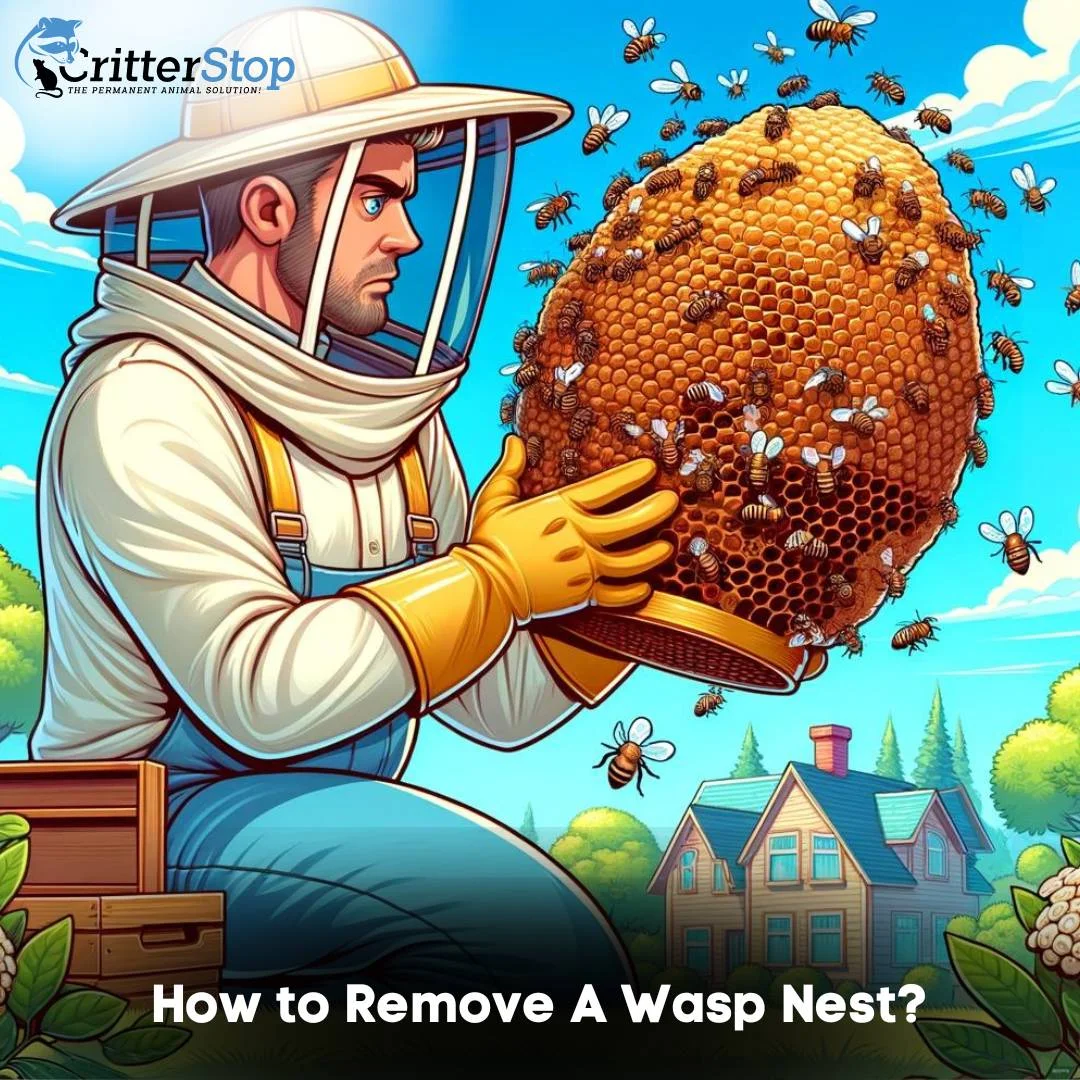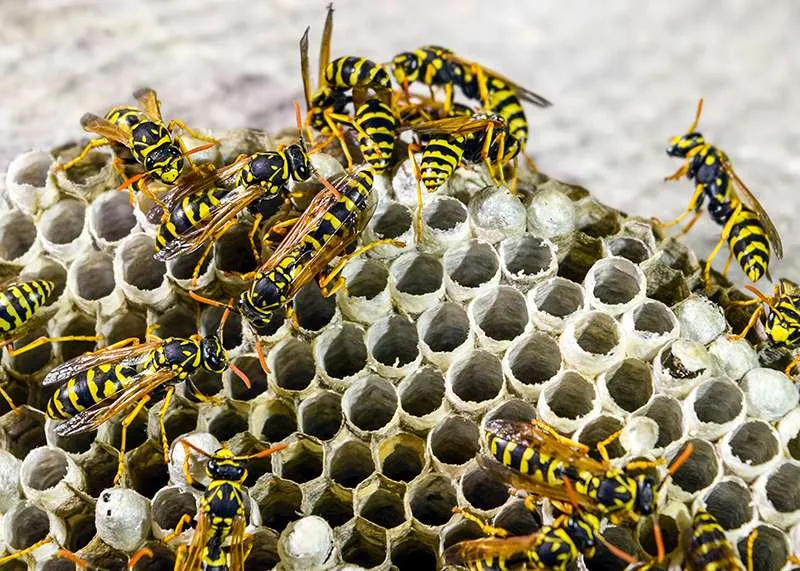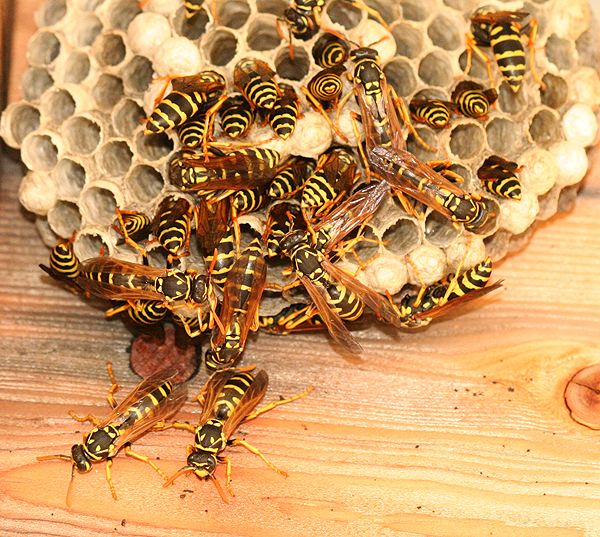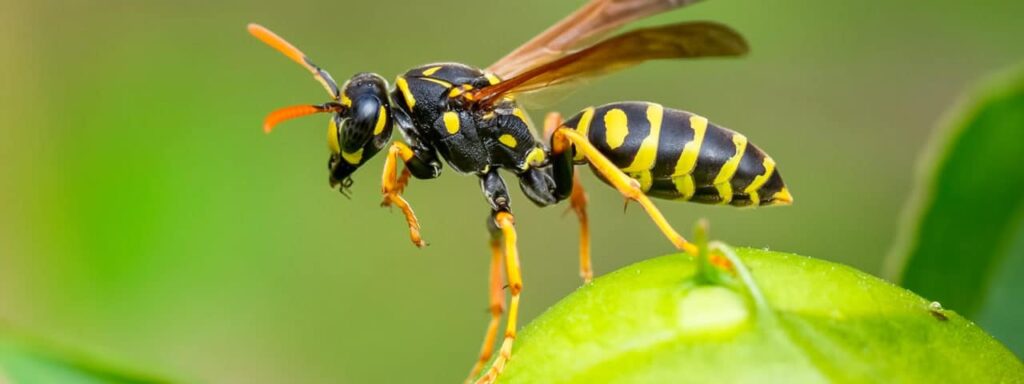
So, you're in your backyard, sipping on lemonade, and suddenly you spot it – a mysterious paper fortress suspended from a tree branch or tucked away under the eaves of your home. What you've stumbled upon is none other than a paper wasp nest. These remarkable creations are the work of our industrious buzzing buddies, wasps.
A wasp nest is like a bustling city, complete with a queen, worker wasps, and even some security personnel (more on that later). It's where they live, eat, and hatch their diabolical plans, which usually involve protecting their queen and, well, stinging anyone who threatens their hive. But fear not, we're here to guide you through the process of handling these aerial abodes.
Why remove a wasp nest, you ask? Well, besides the fact that having a thriving wasp metropolis near your home can be quite unnerving, there's the not-so-small matter of safety. Wasps, especially the feisty yellow jackets, can deliver a painful sting when they feel threatened. And let's be honest, who wants to share their backyard barbecue with an army of angry wasps?
But fret not! We're about to dive into the art of identifying, safely removing, and preventing these buzzy neighbors from overstaying their welcome.
So, you're on a mission to deal with those pesky wasps, but first, you've got to find their hideout. Let's embark on a wasp-nest-hunting adventure:
Wasp nests aren't your average DIY projects; these buzzing builders are particular about their real estate choices. Here are some of their favorite spots:
Now, let's play detective. How do you know if you've got some wasp neighbors? Keep your eyes and ears peeled for these telltale signs:
By keeping an eye out for these signs and knowing where wasps like to set up shop, you'll be better prepared to pinpoint their nest and take the necessary steps to deal with your buzzy neighbors.
Let's talk safety. Wasps are not keen on visitors, especially if they didn't invite you to their nest-warming party. If you disturb their nest, they might not take kindly to your intrusion. That's when the stinging starts, and trust us, it's no picnic. However, not all wasps are aggressive, and some wasp species will sting only if they feel threatened.
When dealing with a wasp nest, dressing the part is crucial. Think of yourself as a wasp wrangler, complete with protective gear. A beekeeper's suit would be ideal, but if you don't have one handy, go for thick clothing that covers you from head to toe. Don't forget gloves and a veil or hat with a net to protect your face. Safety first!

Alright, time to gear up for the mission. Your secret weapons: a flashlight (for those hard-to-reach spots), a long-range wasp spray (more on that in a bit), and a bag or container to collect the fallen nest.
But here's a pro tip: plan your attack early spring or for late evening or early morning when wasps are less active and less likely to swarm you. Sneaky, right?
Now comes the daring part – spraying the nest with wasp traps. Keep your distance, aim for the entrance, and drench that nest with wasp spray. This will stun the residents and prevent them from chasing you down like an action movie chase scene.
But here's a crucial piece of advice: Do NOT stand directly under the nest. Always maintain a safe distance to avoid being collateral damage in the wasp war.
Once you've given the wasps a good soaking, it's time to carefully remove the nest. Use a long stick or pole to knock it down into a bag or container. And remember, this is no souvenir – dispose of it safely, far away from your living quarters.
The best way to remove wasps nest without needing to spray and kill them is to do it in the cold, winter months. Most wasps die in the winter or will spend it hibernating deep in trees, deep in cracks and crevices of buildings, or underground. Because wasps are least active during winter, this is, in our opinion, the best time to remove wasp nest.
Because most wasps die or hibernate during winter, you can usually remove a paper wasp nest in winter without worrying about getting stung. There are exceptions to this rule, but if you monitor it safely, removing the wasps nest in winter is much safer than other times of the year.
While we hate to disrupt wildlife if at all possible, we recommend it if they threaten you, your family, or your pets, or they cause destruction to your property. We can live with wildlife peacefully, which is why we are such big advocates of humane wildlife removal and pest control services.

Now, let's talk about rolling up your sleeves and taking matters into your own hands when it comes to dealing with a wasp nest. If you're feeling adventurous, there are some DIY methods that might just do the trick:
So, you're ready to tackle the wasp nest head-on? The best way to go about it is the method we described earlier – spraying the wasp killer spray the nest. But wait, don't rush in just yet! Remember, this isn't a superhero movie, and you don't need to be a wasp-whisperer to do it safely.
Now, let's say you're feeling particularly zen about wasps. Perhaps you're an insect whisperer at heart and don't want to harm these little pollinators. There's a more humane approach – wasp relocation services, anyone?
However, here's a small disclaimer: this method isn't suitable for nests of aggressive species like yellow jackets. They might not take too kindly to the idea of moving house.
Now, if you're looking for the ideal time to pull off this epic nest eviction of paper wasps, think winter wonderland! During the winter season, wasps go into hibernation mode. They abandon their nests, which become eerily empty.
By choosing the right DIY method and the perfect timing, you can make your wasp nest removal adventure a success, all while ensuring the safety of both you and your buzzy neighbors.
But what if you're not quite ready to don your wasp warrior gear and tackle this mission yourself? That's where the pros come in. If the wasps nest is in a particularly tricky spot, large, or if you have an allergy to wasp stings, it's best to call in an exterminator. They've got the skills and the equipment to handle even the most formidable nests.
However, this expertise comes at a price. The cost of professional wasp nest removal can vary depending on the size and location of the nest. It's an investment in a paper wasp nest-free future, but it's essential to weigh the pros and cons.
At Critter Stop, we always encourage our readers to get in touch with professionals in wildlife removal, in our experience, is always cheaper to let the experts handle the situation, than DIY following some random tips from social media that could lead to worse - and expensive - results.
Congratulations on reclaiming your space from those pesky wasps! Now, let's ensure they don't return by making your home and other wasps' property less appealing to these winged intruders.
Wasps are foodies, and they love a good feast. To deter them, follow these steps:
Keep your outdoor dining area clean and tidy. Store food in airtight containers, and don't leave open containers or crumbs behind after a meal.
Regularly pick up fallen fruits from your trees or garden. These fallen fruit can be a sweet temptation for wasps.
If you enjoy outdoor beverages, cover your drinks with lids or use cups with lids and straws. Wasps are drawn to sugary liquids.
To prevent wasps from making your property their nesting ground, take these preventive measures:
By taking these precautions, you'll make your home and property less inviting to wasps, reducing the chances of future nests and ensuring a more enjoyable, wasp-free environment.

And there you have it, your ultimate guide to dealing with wasp nests. From identifying their sneaky hideouts to safely removing them, you're now equipped with the knowledge to handle these stinging squatters.
So, why go through all this trouble? Aside from the obvious benefit of not sharing your space with an angry swarm, it's all about safety and peace of mind. Removing a wasp nest ensures that your home remains a haven free from unexpected and painful surprises.
Dealing with a wildlife or pest control issue in Dallas - Fort Worth? Count on Critter Stop for fast and humane removal services. Trust our expertise, dedication, and range of solutions to swiftly solve your issue. We take pride in providing fast, fair, and effective solutions. Call us today at (214) 234-2616 for your free estimate!
Visit our Critter Library and learn more about our furry friends